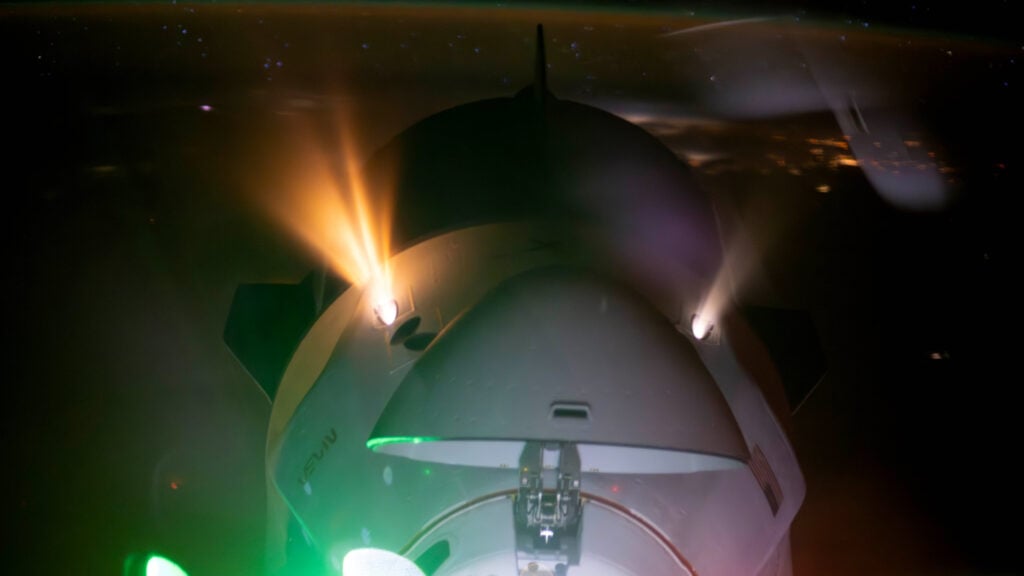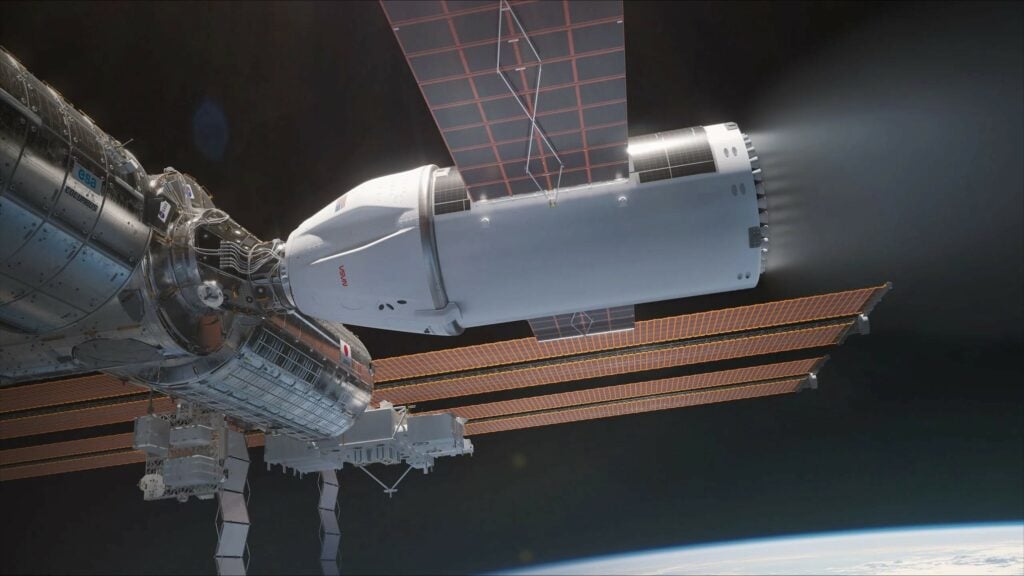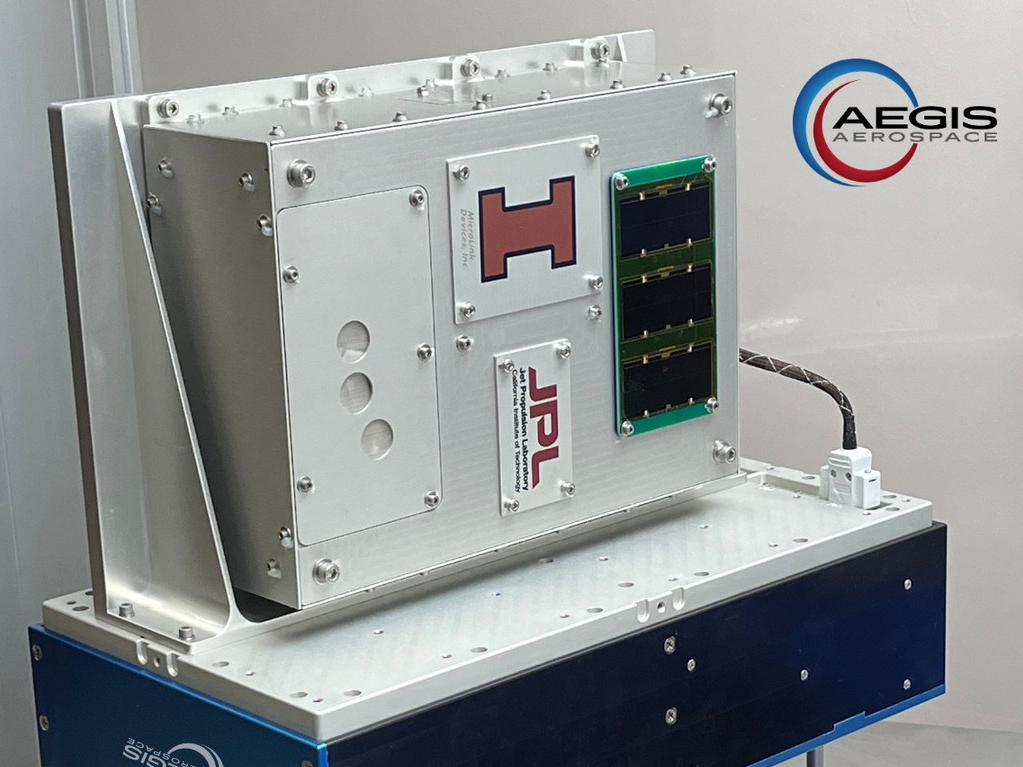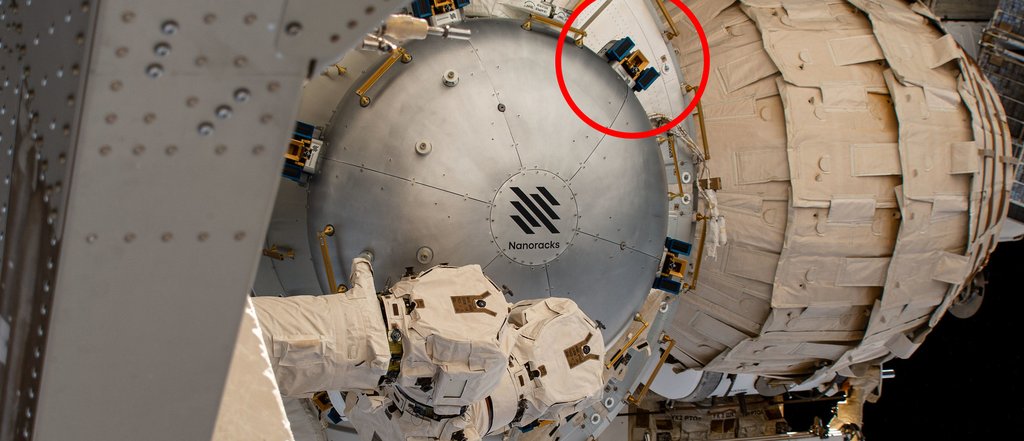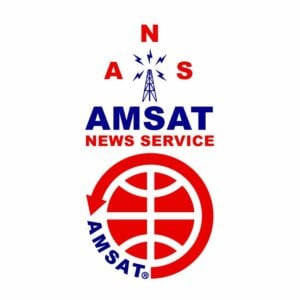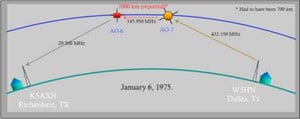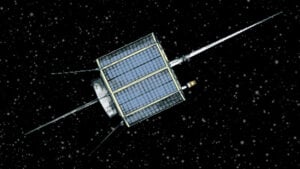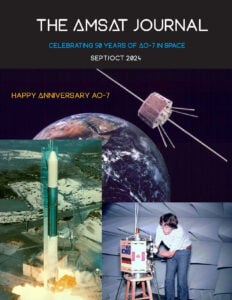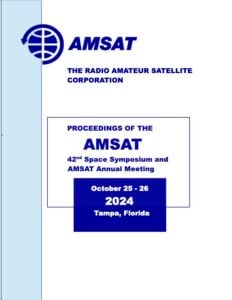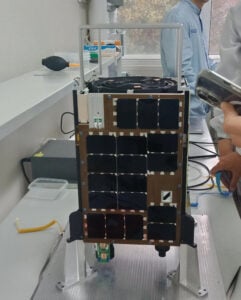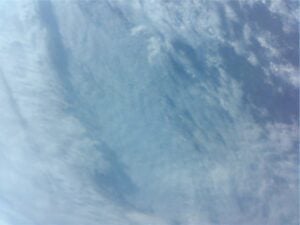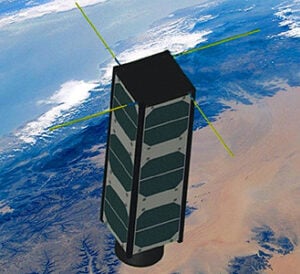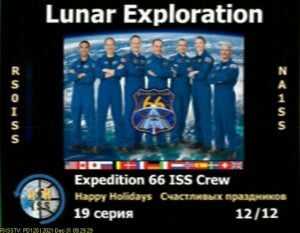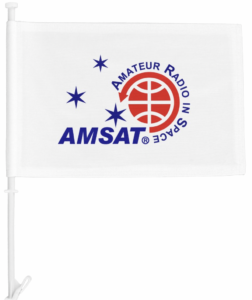In this edition:
- AMSAT OSCAR-7 50th Anniversary: CodeStore Breaking New Ground
- GridMasterMap Satellite Top 100 Rovers December 2024 Rankings
- Japan Launches World’s First Wooden Satellite to Test Timber in Space
- Open-Weather APT: Updates to the Web Based NOAA APT Image Decoder
- ARISS News
- Upcoming Satellite Operations
- AMSAT Ambassador Activities
- Satellite Shorts From All Over
The AMSAT News Service bulletins are a free, weekly news and information service of AMSAT, the Radio Amateur Satellite Corporation. ANS publishes news related to Amateur Radio in Space including reports on the activities of a worldwide group of Amateur Radio operators who share an active interest in designing, building, launching and communicating through analog and digital Amateur Radio satellites.
The news feed on http://www.amsat.org publishes news of Amateur Radio in Space as soon as our volunteers can post it.
Please send any amateur satellite news or reports to: ans-editor [at] amsat [dot] org.
You can sign up for free e-mail delivery of the AMSAT News Service Bulletins via the ANS List; to join this list see: https://mailman.amsat.org/postorius/lists/ans.amsat.org/
ANS-336 AMSAT News Service Weekly Bulletins
To: All RADIO AMATEURS
From: Radio Amateur Satellite Corporation
712 H Street NE, Suite 1653
Washington, DC 20002
DATE 2024 Dec 01
AMSAT OSCAR-7 50th Anniversary: CodeStore Breaking New Ground
There has always been a fascination among radio amateurs in digital modes of communications. In thinking about where this spacecraft sits in electronic history, it is all too easy to forget that it was designed at least three years before the appearance of the first 8-bit microprocessor. The notion of packet communications was still nearly 10 years into the future. The team wanted to demonstrate that they could store data at-will on a spacecraft in transit across the sky and then download it at another location. They wanted to demonstrate non-real-time digital communications to themselves and to the world.
Jan King, W3GEY, AMSAT OSCAR-7 Project Manager explains, “Thinking in retrospect, that experiment wasn’t the best it could have been. However, it was simple and it proved our resolve. The entry in 1972 on AO-6 and, then again, in 1974 on-board AO-7 was a demonstration experiment we called CodeStore. And, it did lead to far more ambitious packetized, store-and-forward data satellites in our future.
“It probably wasn’t the best choice at the time, but we chose the command frequency for the uplink. This meant we didn’t have to implement yet another receiver. However, this made the experiment far less accessible to hams than it could have. AMSAT did not want to share the knowledge of the command frequency and codes with anyone who didn’t have a need to know them. Thus, CodeStore was not an experiment that was shared with everyone as were the communications transponders. It could realistically only be used by authorized command stations. We had hoped for a universal store-and-forward demonstration, but what was in fact created was a broadcast tool and in that regard CodeStore was very successful.”
CodeStore was the brainchild of and was designed and fabricated by John Goode, W5CAY. In one small module, he housed an AFSK decoding system, which allowed uplink data to be clocked into a “long” shift register containing 896 bits. This was done with the memory IC’s of the day. What one could manage then was 14 IC’s each containing 64 bits of serial data storage. The contents of the shift register was sequentially downlinked first-in-first-out (FIFO) to the selected beacon when CodeStore was commanded to the RUN mode.
This number of bits is divisible by 8 so one might have expected that a downlinked message of 112 8-bit words. No, this was 1974 so Morse Code messages were downlinked. The idea was more individuals can copy a broadcast message if they don’t need specialized decoding equipment. King adds, “No one can deny that we could have made a better go of it if the notion of a remote terminal digital communications goal had remained pure. It did not.”
“Ultimately, its highest value was discovered to be to store the spacecraft’s NORAD TLEs as well as any critical AO-7 operating schedule modifications, which might be of importance to the users. CodeStore was already available for use on AO-6. So, users were already expecting this feature, which appeared regularly on the beacons.”
While CodeStore was used on both AO-6 and AO-7 to demonstrate non-real-time communications via satellite, it was never used by independent remotely located stations to demonstrate two-way communications in that way. The memory facilities required on-board and the lack of any firmware that even approached the capabilities of a file handling system did not exist in 1972-74. That would have to wait for another day when, once again, four AMSAT spacecraft in a small constellation would demonstrate a proper store-and-forward packet handling system. That was to occur in 1990.
CodeStore went into service as a broadcast device allowing users to receive, in Morse Code, the latest, (then) NORAD TLEs. CodeStore was a complete success. It saved command stations a tremendous amount of work, avoiding the need for a global network of operators who would otherwise be needed to relay the same data.
Persons wanting to read more about the life and history of AMSAT OSCAR-7 are invited to visit https://www.amsat.org/amsat-ao-7-a-fifty-year-anniversary/.
[ANS thanks Jan King, W3GEY, AMSAT OSCAR-7 Project Manager for the above information.]
GridMasterMap Satellite Top 100 Rovers December 2024 Rankings
The December 2024 rankings for the Top 100 Rovers (Mixed LEO/MEO/GEO) in satellite operations, as determined by @GridMasterMap on Twitter, has been released. The ranking is determined by the number of grids and DXCC entities activated, taking into account only those grids where a minimum number of QSO’s logged on the gridmaster.fr website have been validated by a third party. Grid numbers do not directly reflect the exact number of activations. Satellite operators are encouraged to upload their LoTW satellite contacts to https://gridmaster.fr in order to provide more accurate data.
Updated: 2024-11-29
| 1 | ND9M | 26 | KX9X | 51 | N6DNM | 76 | LU4JVE |
|---|---|---|---|---|---|---|---|
| 2 | NJ7H | 27 | ON4AUC | 52 | JK2XXK | 77 | AA8CH |
| 3 | JA9KRO | 28 | KG5CCI | 53 | EB1AO | 78 | VE1VOX |
| 4 | UT1FG | 29 | N5BO | 54 | EA4NF | 79 | FG8OJ |
| 5 | N5UC | 30 | K8BL | 55 | SM3NRY | 80 | PT9BM |
| 6 | DL6AP | 31 | KE4AL | 56 | JL3RNZ | 81 | KJ7NDY |
| 7 | OE3SEU | 32 | KB5FHK | 57 | DF2ET | 82 | KI7UXT |
| 8 | WI7P | 33 | VE3HLS | 58 | XE1ET | 83 | YU0W |
| 9 | DP0POL | 34 | KI0KB | 59 | AA5PK | 84 | KB2YSI |
| 10 | K5ZM | 35 | KI7UNJ | 60 | KI7QEK | 85 | N6UTC |
| 11 | F5VMJ | 36 | LA9XGA | 61 | SP5XSD | 86 | N4DCW |
| 12 | N6UA | 37 | PA3GAN | 62 | F4DXV | 87 | WA9JBQ |
| 13 | HA3FOK | 38 | JO2ASQ | 63 | AD7DB | 88 | JM1CAX |
| 14 | WY7AA | 39 | F4BKV | 64 | VE1CWJ | 89 | VE3GOP |
| 15 | N9IP | 40 | BA1PK | 65 | KE9AJ | 90 | N0TEL |
| 16 | W5PFG | 41 | N7AGF | 66 | DL4EA | 91 | KG4AKV |
| 17 | AK8CW | 42 | VK5DG | 67 | N8RO | 92 | W8MTB |
| 18 | DL2GRC | 43 | VA3VGR | 68 | VA7LM | 93 | K0FFY |
| 19 | AD0DX | 44 | XE3DX | 69 | KM4LAO | 94 | CU2ZG |
| 20 | LU5ILA | 45 | KE0WPA | 70 | M1DDD | 95 | VE7PTN |
| 21 | N4AKV | 46 | PR8KW | 71 | W8LR | 96 | K6VHF |
| 22 | WD9EWK | 47 | K7TAB | 72 | W1AW | 97 | AF5CC |
| 23 | ND0C | 48 | KE0PBR | 73 | N4UFO | 98 | VE6WK |
| 24 | AD0HJ | 49 | AC0RA | 74 | HB9GWJ | 99 | DK9JC |
| 25 | DJ8MS | 50 | W7WGC | 75 | PT2AP | 100 | BG7QIW |
[ANS thanks @GridMasterMap for the above information.]
Only four Weeks Left!
And the 2024 AMSAT President’s Club Coins Are Gone!
Help Support GOLF and Fox Plus
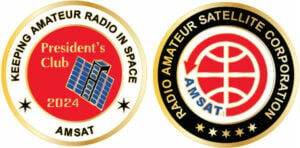
Join the AMSAT President’s Club today and help
Keep Amateur Radio in Space!
https://www.amsat.org/join-the-amsat-presidents-club/
Japan Launches World’s First Wooden Satellite to Test Timber in Space
Japanese researchers launched the world’s first wooden satellite, LignoSat, into space, marking an ambitious step toward exploring the viability of timber for lunar and Martian construction. This pioneering satellite, developed collaboratively by Kyoto University and Sumitomo Forestry, was sent to the International Space Station aboard a SpaceX mission from NASA’s Kennedy Space Center on November 4, 2024. Once at the ISS, LignoSat will be released into orbit approximately 400 kilometers (250 miles) above Earth.
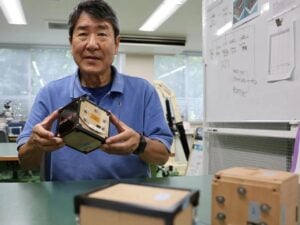
LignoSat, a 1U-sized CubeSat, carries an Amateur Radio mission that will extract callsigns from the FM packet data signals uplinked, and respond to them by using the CW downlink with their call signs.
An educational mission is to educate students to learn about the characteristics of the satellite by acquiring its housekeeping data such as the internal temperature, the strain of the wooden structure, and the Earth’s magnetic field and calculating the rotational direction and rate of the satellite as well as observing the effect of the space environment on the wooden structure.
The satellite, whose name derives from the Latin word for “wood,” is a compact, palm-sized structure. LignoSat’s mission is to demonstrate the potential of wood as a sustainable and durable material for space exploration. Takao Doi, a former astronaut and a current researcher at Kyoto University, expressed that using timber could pave the way for constructing habitats that support human life and work in space indefinitely. “With timber, a material we can produce by ourselves, we will be able to build houses, live, and work in space forever,” Doi said.
Doi’s team is working under a 50-year vision of building timber structures on the Moon and Mars, planting the seeds for future space-based infrastructure. The researchers opted for Honoki, a type of magnolia tree native to Japan traditionally used for sword sheaths, after conducting a 10-month experiment on the ISS. Honoki proved its resilience, leading to its selection as the core material for LignoSat. The satellite was constructed using a traditional Japanese craft technique without screws or glue, showcasing innovation steeped in heritage.
One of LignoSat’s key roles in its six-month orbit will be to measure the endurance of wood against extreme space temperatures, which oscillate from -100 to 100 degrees Celsius (-148 to 212 degrees Fahrenheit) every 45 minutes as the satellite shifts from sunlight to darkness. The onboard sensors will also monitor how well wood mitigates space radiation’s impact on semiconductors, information that could be pivotal for designing data centers and other space-based structures. Kenji Kariya of Sumitomo Forestry emphasized the cutting-edge nature of this research, noting that despite appearing old-fashioned, wood could be integral to future space technology.
The environmental benefits of using wood in space are significant. Unlike conventional metal satellites that produce polluting aluminum oxide particles upon re-entry, wooden satellites would disintegrate more cleanly in Earth’s atmosphere. “A wooden satellite burns up with much less pollution compared to metal ones,” Doi stated. This feature could be an advantage as the space industry grapples with sustainability and the proliferation of space debris.
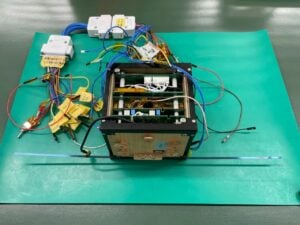
The team behind LignoSat is optimistic that their experiment could spur wider adoption of timber in space exploration. Doi even hinted at the potential for future partnerships, saying, “If we can prove our first wooden satellite works, we want to pitch it to Elon Musk’s SpaceX.” The successful deployment of LignoSat could mark the beginning of a new era where traditional materials meet advanced space technology, reinvigorating the timber industry and pushing the boundaries of sustainable innovation in space exploration.
A downlink on 435.820 MHz has been coordinated for CW, 4k8 GMSK AX25 telemetry and FM. More info at https://space.innovationkyoto.org/amateur-radio-operators/
[ANS thanks Kantaro Komiya and Irene Wang, Reuters, for the above information.]
Open-Weather APT: Updates to the Web Based NOAA APT Image Decoder
Dr. Sasha Engelmann and Sophie Dyer, the team behind the Open-Weather project have recently announced the launch of their new version of open-weather app, a web-based NOAA APT image decoder. The web-based program accepts a WAV file containing a NOAA satellite APT recording, demodulates and decodes it, and displays the resulting weather satellite image.
Sasha writes, “…Open-weather apt is the only public, maintained, browser-based decoder for Automatic Picture Transmissions (APT) from satellites NOAA-19, NOAA-18 and NOAA-15. It was developed to improve access to satellite signal decoding for all practitioners.
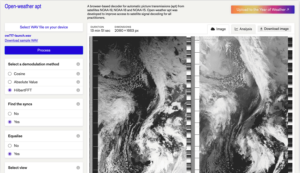
“We are excited to share a new and improved version available here! The new version includes the following updates and additional features:
Improved accuracy in decoding and finding sync positions (locates more sync positions than other comparable decoders)
Upload a WAV file of any sample rate (no more re-sampling with Audacity!)
Option to see the ‘raw’ image without syncing, and to ‘Find the Syncs’
Option to Rotate 180 degrees, often useful for viewing images from nighttime passes
Go deeper in your analysis: explore Signal Value and Image Value Histograms
Upload directly from open-weather apt to the Public Archive
“Open-weather apt is co-developed by open-weather with Rectangle (Lizzie Malcolm and Dan Powers), Bill Liles (NQ6Z) and Grayson Earle.”
Complete information at https://open-weather.community/decode/.
[ANS thanks RTL-SDR.com for the above information.]
Need new satellite antennas?
Purchase M2 LEO-Packs from the AMSAT Store.
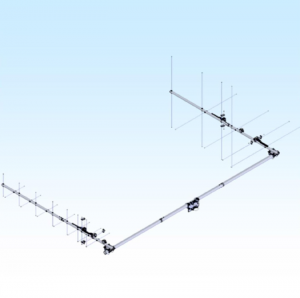
When you purchase through AMSAT, a portion of the proceeds goes towards
Keeping Amateur Radio in Space.
https://amsat.org/product-category/hardware/
Changes to AMSAT TLE Distribution for November 29, 2024
Two Line Elements or TLEs, often referred to as Keplerian elements or keps in the amateur community, are the inputs to the SGP4 standard mathematical model of spacecraft orbits used by most amateur tracking programs. Weekly updates are completely adequate for most amateur satellites. TLE bulletin files are updated daily in the first hour of the UTC day. New bulletin files will be posted immediately after reliable elements become available for new amateur satellites. More information may be found at https://www.amsat.org/keplerian-elements-resources/.
The following satellite has been added to this week’s AMSAT TLE distribution:
AO-123 Provisional catalog number 99130 IARU coordinated downlink 435.4000 MHz.
[ANS thanks Joe Fitzgerald, KM1P, AMSAT Orbital Elements Manager, for the above information.]
Want to fly the colors on your own grid expedition?
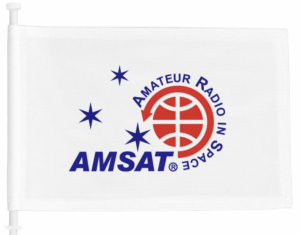
Get your AMSAT car flag and other neat stuff from our Zazzle store!
25% of the purchase price of each product goes towards
Keeping Amateur Radio in Space
https://www.zazzle.com/amsat_gear
ARISS NEWS
Amateurs and others around the world may listen in on contacts between amateurs operating in schools and allowing students to interact with astronauts and cosmonauts aboard the International Space Station. The downlink frequency on which to listen is 145.800 MHz worldwide.

Upcoming Contacts
South Carolina RWAs (Regional Workforce Advisors), Columbia, SC, direct via N4EE.
The ISS callsign is presently scheduled to be NA1SS.
The scheduled crewmember is Nick Hague, KG5TMV.
The ARISS mentor is Don Hopson, K4CF.
Contact is go for Monday, December 2, 2024 at 16:22 UTC.
Watch for Livestream at https://dew.sc.gov/.
Simferopol College of Radio Electronics, Simferopol, Russia, direct via TBD.
The ISS callsign is presently scheduled to be RSØISS.
The scheduled crewmember is Ivan Vagner.
The ARISS mentor is RV3DR .
Contact is go for Monday, December 2, 2024 at 15:15 UTC.
CEIP INDAUTXUKO ESKOLA HLHI, Bilbao, Spain, telebridge via ON4ISS.
The ISS callsign is presently scheduled to be OR4ISS.
The scheduled crewmember is Sunita Williams, KD5PLB.
The ARISS mentor is Marcelo Teruel, IK0USO.
Contact is go for: Wednesday, December 4, 2024 at 11:47 UTC.
State Budgetary Educational Institution “Vorobyovy Gory”, Moscow, Russia, direct via TBD.
The ISS callsign is presently scheduled to be RSØISS.
The scheduled crewmember is Alexander Gorbunov.
The ARISS mentor is RV3DR.
Contact is go for Thursday, December 5, 2024 at 11:00 UTC.
Shchyolkovo, Russia, direct via TBD.
The ISS callsign is presently scheduled to be RSØISS.
The scheduled crewmember is Aleksey Ovchinin.
The ARISS mentor is RV3DR.
Contact is go for Friday, December 6, 2024 at 10:10 UTC.
Publiczna Szkola Podstawowa im. Walentego Stefanskiego w Bodzechowie, Bodzechow, Poland, direct via SP7POS.
The ISS callsign is presently scheduled to be OR4ISS.
The scheduled crewmember is Don Pettit, KD5MDT.
The ARISS mentor is Armand Budzianowski, SP3QFE.
Contact is go for Friday, December 6, 2024 at 11:49 UTC.
Completed Contacts
Colegio do Castanheiro, Ponta Delgada, Azores, direct via CQ8CDC.
The ISS callsign is presently scheduled to be OR4ISS.
The scheduled crewmember is Don Pettit, KD5MDT.
The ARISS mentor is Marcelo Teruel,IK0USO.
Contact was successful on Tuesday, November 26, 2024 at 14:57 UTC.
The crossband repeater continues to be active (145.990 MHz up {PL 67} & 437.800 MHz down). If any crewmember is so inclined, all they have to do is pick up the microphone, raise the volume up, and talk on the crossband repeater. So give a listen, you just never know.
The packet system is also active (145.825 MHz up & down).
As always, if there is an EVA, a docking, or an undocking; the ARISS radios are turned off as part of the safety protocol.
Note, all times are approximate. It is recommended that you do your own orbital prediction or start listening about 10 minutes before the listed time.
The latest information on the operation mode can be found at https://www.ariss.org/current-status-of-iss-stations.html
The latest list of frequencies in use can be found at https://www.ariss.org/contact-the-iss.html
[ANS thanks Charlie Sufana, AJ9N, one of the ARISS operation team mentors for the above information.]
Upcoming Satellite Operations
- ADØHJ is planning his last 2024 rove to the Missouri Ozarks area between December 5-8, 2024. Mitch has never been to that area so he is looking to do some sightseeing and activate eight new satellite grid squares. EM26-EM28, EM36-EM39, and EN30. He will be working RS-44 passes in the evenings. See https://hams.at for details.
A growing number of satellite rovers are currently engaged in sharing their grid square activations on https://hams.at. By visiting the website, you gain easy access to comprehensive information about the operators responsible for activating specific grid squares. Additionally, you have the ability to assess the match score between yourself and a particular rover for a given pass, while also being able to identify the upcoming satellite passes that are accessible from your location.
[ANS thanks Ian Parsons, K5ZM, AMSAT Rover Page Manager, and Alex Ners, K6VHF, for the above information.]
AMSAT Ambassador Activities
AMSAT Ambassadors provide presentations, demonstrate communicating through amateur satellites, and host information tables at club meetings, hamfests, conventions, maker faires, and other events.
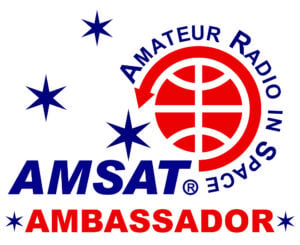
December 19, 2024
Central Kentucky Amateur Radio Society
CKARS Monthly Meeting
558 S Keeneland Dr.
Richmond, KY 40475
https://www.ckars.org/home
AI4SR
February 14-15, 2025
Yuma HAMCON and Southwestern Division Convention
Yuma County Fairgrounds
Yuma, AZ
https://www.yumahamfest.com/
N1UW
Interested in becoming an AMSAT Ambassador? AMSAT Ambassadors provide presentations, demonstrate communicating through amateur satellites, and host information tables at club meetings, hamfests, conventions, maker faires, and other events.
For more information go to: https://www.amsat.org/ambassador/
[ANS thanks Bo Lowrey, W4FCL, Director – AMSAT Ambassador Program for the above information.]
Satellite Shorts From All Over
- NASA has confirmed that one of its greatest ever missions, Voyager 1, is back in business with communications restored following an incident in October that had led to the veteran spacefarer losing its voice. When engineers commanded Voyager 1 to switch on one of its heaters to give the instruments a gentle thermal massage, a safety feature was tripped because of low power levels. It automatically switched off non-essential systems. The fault protection system took it upon itself to switch off the main X-band transmitter and activate the lower-power S-band transmitter instead. Because of the great distance between Voyager 1 and Earth, however, transmissions on the S-band antenna could not be heard by NASA’s Deep Space Network, meaning that Voyager 1 had effectively fallen silent. NASA engineers were able to resolve the problem early in November, and X-band communication resumed on Nov. 18, with the spacecraft once again returning data from its four remaining instruments. Read the complete story at https://tinyurl.com/ANS-336-Voyager-1. [ANS thanks Space.com for the above information.]
- In addition to all the AMSAT OSCAR-7 publicity in the news this few weeks, AMSAT also received nice exposure about the ARISS program putting kids in contact with astronauts. Read the complete story at https://tinyurl.com/ANS-336-ISS. [ANS thanks Space.com for the above information.]
Join AMSAT today at https://launch.amsat.org/
In addition to regular membership, AMSAT offers membership to:
- Societies (a recognized group, clubs or organization).
- Primary and secondary school students are eligible for membership at one-half the standard yearly rate.
- Post-secondary school students enrolled in at least half time status shall be eligible for the student rate for a maximum of 6 post-secondary years in this status.
- Memberships are available for annual and lifetime terms.
Contact info [at] amsat [dot] org for additional membership information.
73 and remember to help Keep Amateur Radio in Space!
This week’s ANS Editor, Frank Karnauskas, N1UW
f.karnauskas [at] amsat [dot] org
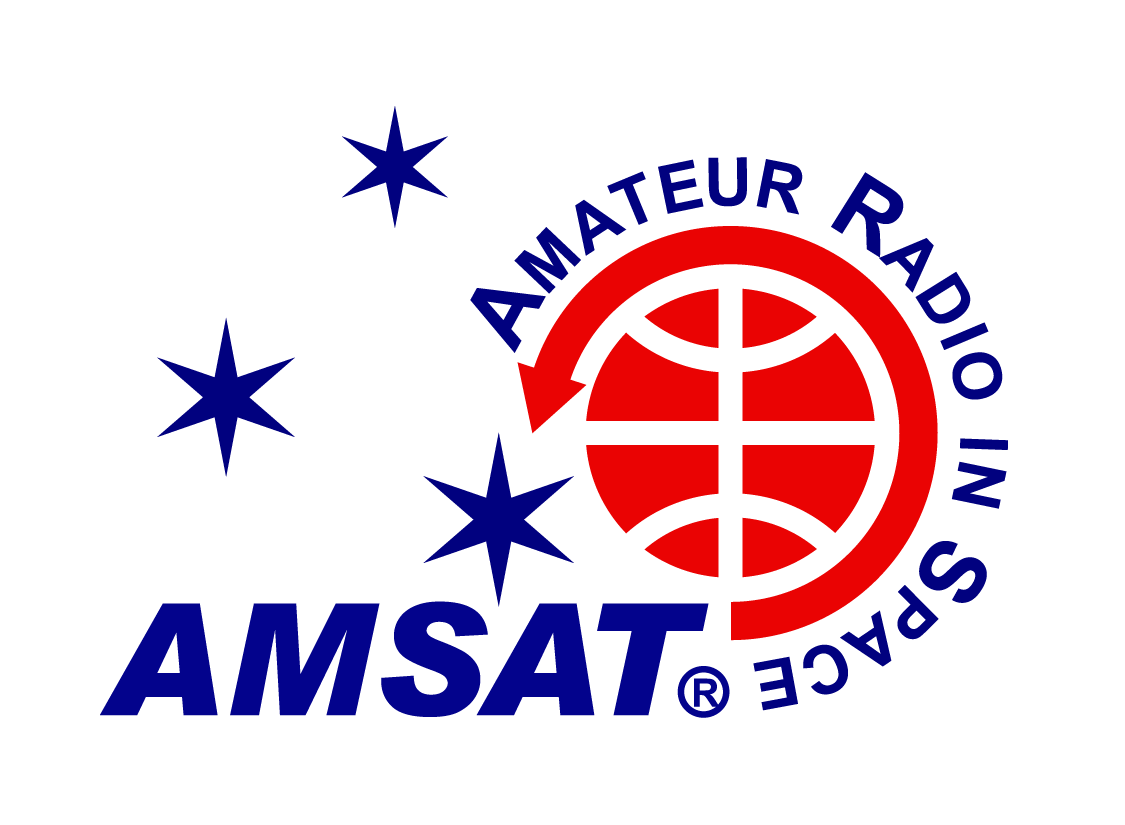
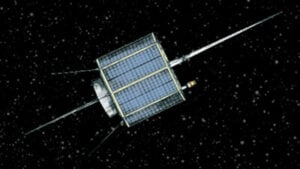 Artist rendering of AO-7
Artist rendering of AO-7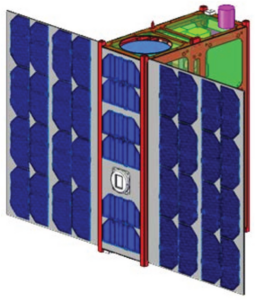
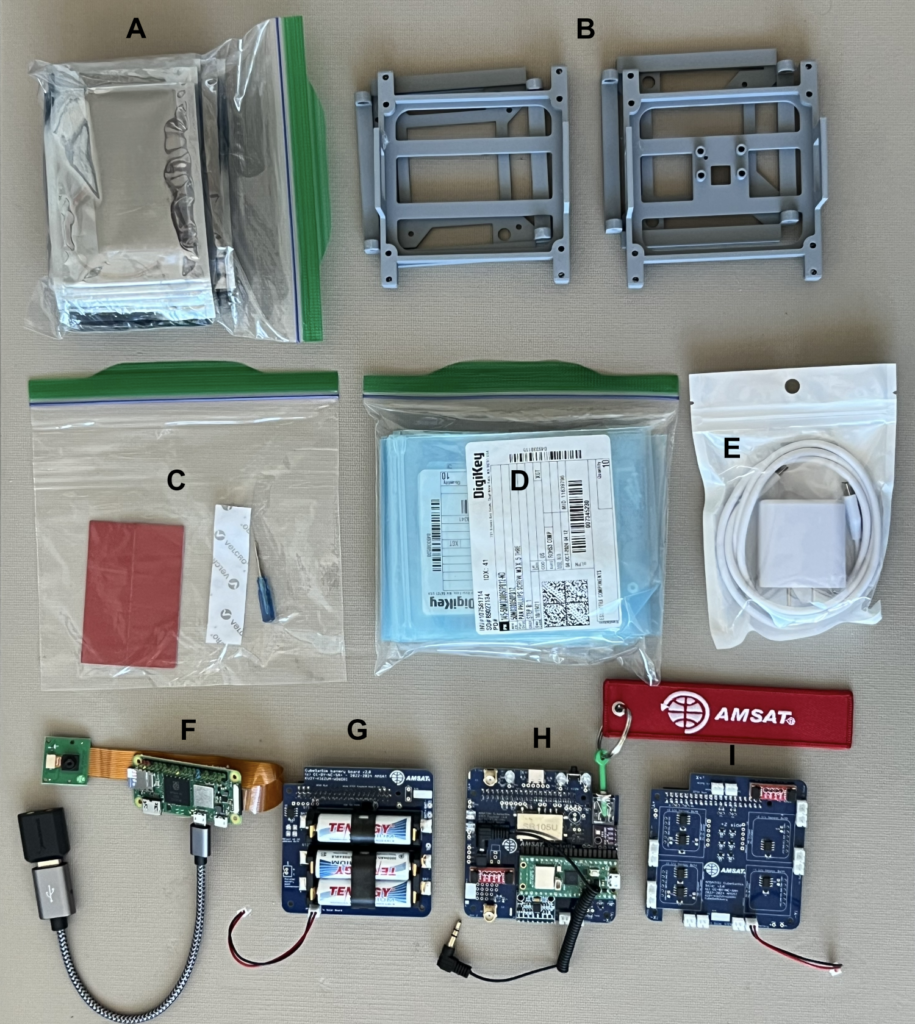 Limited quantities of the CubeSatSim Kit will soon be available for purchase from the AMSAT Store. [Credit: Alan Johnston, KU2Y]
Limited quantities of the CubeSatSim Kit will soon be available for purchase from the AMSAT Store. [Credit: Alan Johnston, KU2Y]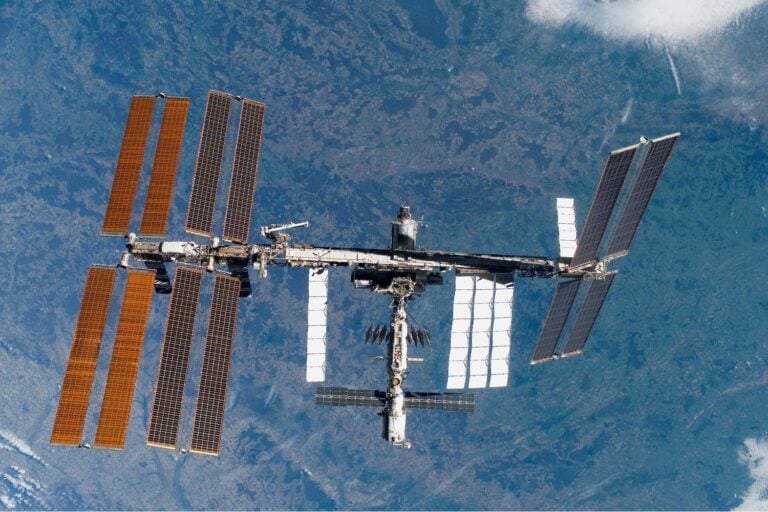 The ISS is set for retirement by 2030. [NASA photo]
The ISS is set for retirement by 2030. [NASA photo] Amateurs and others around the world may listen in on contacts between amateurs operating in schools and allowing students to interact with astronauts and cosmonauts aboard the International Space Station. The downlink frequency on which to listen is 145.800 MHz worldwide.
Amateurs and others around the world may listen in on contacts between amateurs operating in schools and allowing students to interact with astronauts and cosmonauts aboard the International Space Station. The downlink frequency on which to listen is 145.800 MHz worldwide.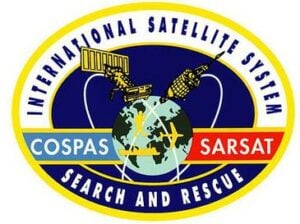
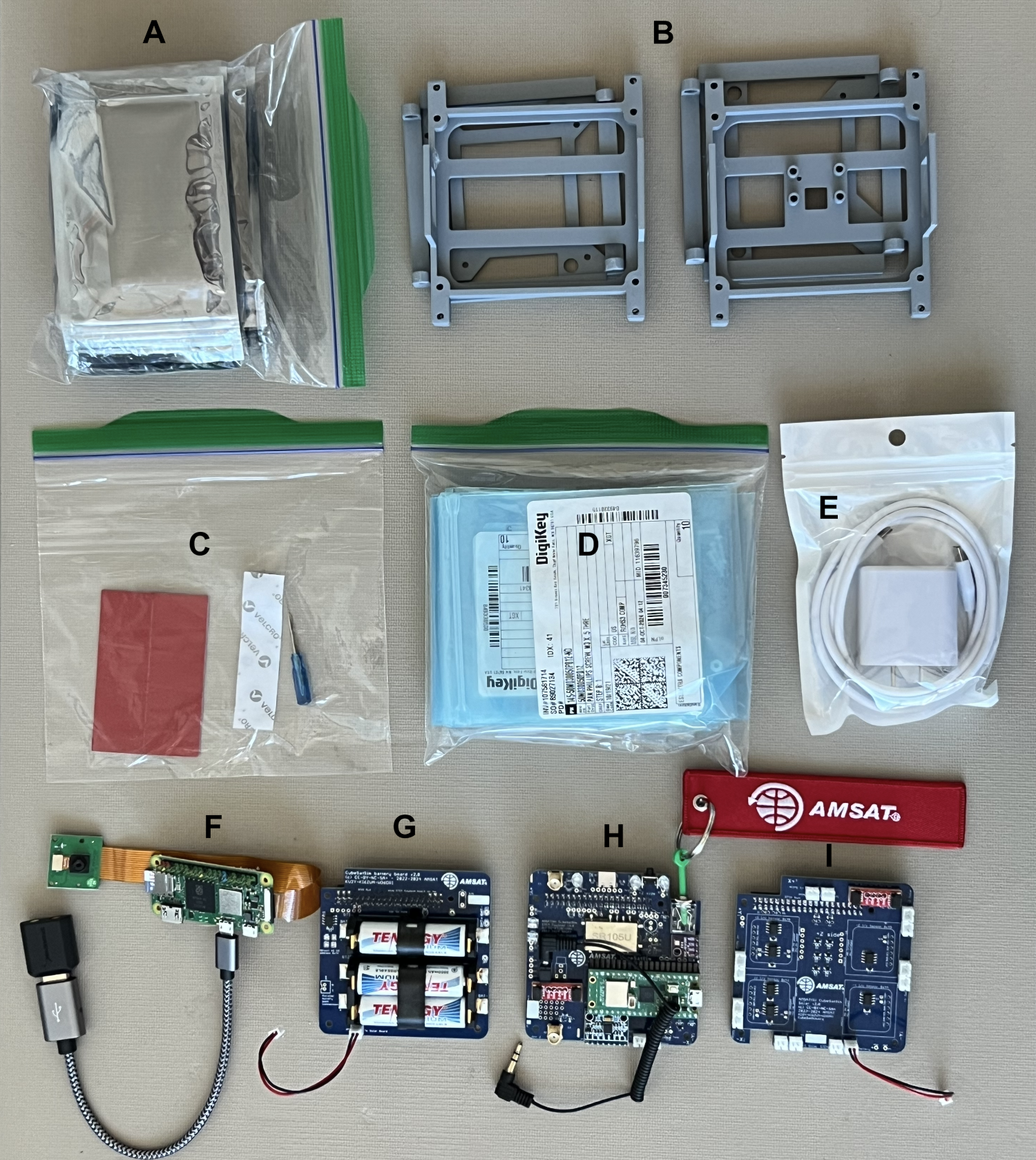
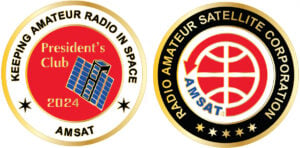 Join the AMSAT President’s Club today and help
Join the AMSAT President’s Club today and help 